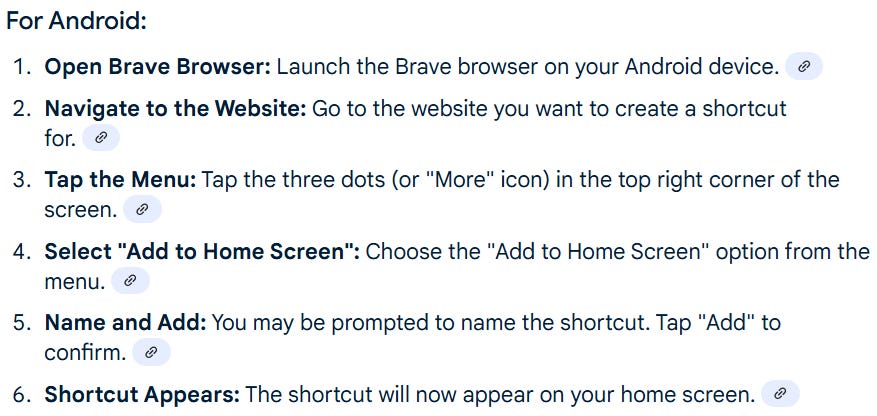You’re on your phone, responding to texts, searching for a restaurant, when it dawns on you: those ads that keep coming up know you a little too well.
It’s not just creepy — it’s a symptom that your phone is sharing a lot more than you might want. In 2024, companies like Google and Apple were scraping some 2 megabytes a second off the average smart phone, monitoring your searches, your locations, how long you looked at a post. People are tired of the status quo, and that’s why they’re going ghost.
A ghost phone isn’t some mafioso burner from a crime series; it’s an ordinary smartphone using a privacy-inclined operating system like GrapheneOS, alongside a secure browser like Brave and no more than a handful of apps. This is about keeping your data your data.
Part of the appeal of ghost phones is an increasing distrust of Big Tech. Your phone is a data factory, churning out information that supports companies whose business is selling your habits to advertisers — or worse. More than 3 billion personal records were exposed in breaches last year, and apps — from social media to flashlight tools — are a common culprit.
Folks don’t want to hide; they want to govern what’s shared. A ghost phone allows you to do that without switching carriers or going off-grid. It runs on a secure operating system that eliminates tracking, utilizes a browser in the place of data-voracious apps, and keeps your information local. It’s a practical way to apply technology without feeling like you’re being analyzed like a lab subject, and it’s simpler to get up and running than you might realize.
So, what exactly is a ghost phone? It’s a smartphone, stripped of Big Tech’s tentacles. Not stock Android or iOS, which are made to spy on you, but something like GrapheneOS, an open source operating system built to keep your data to yourself.
It forgoes apps that leak your data and uses Brave, a browser that protects against trackers and ads. It’s a phone that does what you need — calls, texts, browsing — but also doesn’t report your every move. This isn’t just about avoiding ads; it’s about escaping a system that profits when it knows you better than you know yourself. Whether you’re a parent concerned about your kids’ data or an adult tired of targeted ads, a ghost phone gives you back control.
It all begins with the hardware for a ghost phone. The best option is a Google Pixel, because it’s unlockable — you can install a custom operating system like GrapheneOS. The best choice is to go with a Pixel 6 or later model. It may sound counter-productive, buying a Google phone, but once the OS is stripped the phone is safe to use.
You can purchase one from Best Buy, Amazon or from a privacy-oriented retailer like mark37.com. (Having the phone be carrier-locked, however, makes a difference — make sure to check the model number so that you don’t have to go through the hassle of setting it up.) Having a locked phone might make things more complicated, and you want this to go smoothly. Once you have the Pixel, you can turn it into a ghost phone.
The first and most critical step is to install GrapheneOS. This operating system acts as a replacement for Android’s out-of-the-box setup; it cuts Google’s tracking tools and puts in place security features like strong encryption and isolation between apps.
How to Install GrapheneOS
It’s designed to prevent apps and services from collecting your data without your consent. You’ll need a computer, a USB-C cable and about an hour to install it.
Plug in your Pixel to the computer, head over to GrapheneOS's web site, and follow their web-based installer. It walks you through unlocking the phone’s bootloader, flashing GrapheneOS, locking it again for security. The process is straightforward, even if you aren’t into tech. I set this up on my phone in less than an hour with just a laptop and some patience. If GrapheneOS seems a little too hardcore for you, there’s also CalyxOS, which isn’t quite as strict about privacy.
With GrapheneOS up and running, the next step is apps — or apps avoidance. Almost every app collects data, even seemingly innocuous ones. Studies show that the average phone has about 80 apps on it and that approximately 90% of them share your data with third parties.
Want to ghost phone it? Use as few as you can, preferably one or two for critical activities. Instead of apps, use Brave, a browser that defaults to blocking ads, trackers and scripts. Brave also allows you to visit websites without all the data leaks that apps create. For instance, access X through Brave instead of the X app.
You can setup shortcuts on your phone through the Brave browser to replace your apps. Repeat for news, shopping, or blogs. It’s not just safer, either, it’s often faster because you’re not loading trackers in the background.

Think about your phone’s core functions. Calls and texts? GrapheneOS handles them securely, no extra apps needed. For other tasks, be picky. For email, use ProtonMail through Brave—it’s encrypted, based in Switzerland with tough privacy laws, and doesn’t scan your messages.
Skip apps like Gmail, which analyze your emails for ads. For navigation, avoid Google Maps, which tracks your every turn. Organic Maps is a solid alternative—it works offline, doesn’t log your trips, and still gets you to your destination.
For messaging, Signal is the best choice—end-to-end encrypted and open-source. Since Signal needs a phone number, consider a virtual number from Hushed or MySudo to keep your real one private. Keep your app count low; every app is a potential risk.
Brave is the heart of a ghost phone because it changes how you use the internet. Apps are designed to keep you hooked, with notifications and feeds that pull you in. Brave gives you direct access to websites without those traps.
Want to watch videos? Skip the YouTube app and visit the website through Brave—same content, no tracking.
For shopping, go to a retailer’s website instead of apps like Amazon, which log your browsing habits. Brave’s default settings block most trackers, and it has a Tor mode for extra privacy when you need it. Brave makes the web feel cleaner, like you’re in control instead of being steered.
Storage is another key area. Cloud services like iCloud and Google Drive are convenient but vulnerable. In 2024, Google faced backlash for scanning Drive files without clear permission. A ghost phone keeps data local. Buy an encrypted USB drive—about $20 at any electronics store—and back up your photos, contacts, and documents there.

If you’re up for it, Nextcloud can be set up on a home computer for a private cloud you control. It’s not hard to install, and it’s like having your own Dropbox. If you need online storage, Proton Drive is safer than mainstream options, but store as little as possible online. The less data you put out there, the less can be compromised.
There are downsides. Some apps, like banking or rideshare services, rely on Google or Apple frameworks and won’t work on GrapheneOS. You can try their web versions through Brave—most banks have decent websites.
Staying private takes effort, too. If you log into a Google account or use a browser like Chrome, you’re exposing yourself again. But the benefits are real: fewer targeted ads, less spam, and a sense that your phone isn’t watching you.
The biggest impact might be how you feel. Phones are built to keep you glued, with notifications and feeds that demand attention. Studies show about 80% of people feel tied to their devices.
A ghost phone changes that. With Brave and minimal apps, you use the internet on your terms. Whether you’re shielding your family’s data or just done with feeling tracked, this setup works for anyone who wants more control.
You don’t need to be a tech whiz to do this. Get a Pixel, install GrapheneOS, use Brave, and cut apps to the bare minimum. You might slip up—install an app you don’t need or miss a setting. That’s normal. Online communities on X or privacy forums have tons of tips to keep you on track. It’s not about being perfect; it’s about taking back your privacy. Once your ghost phone’s ready, you’ll feel the difference—a device that serves you, not Big Tech. It’s a simple way to protect your data and use your phone without being used in return.
Please leave your opinions / comments on these stories below, we appreciate your perspective!









